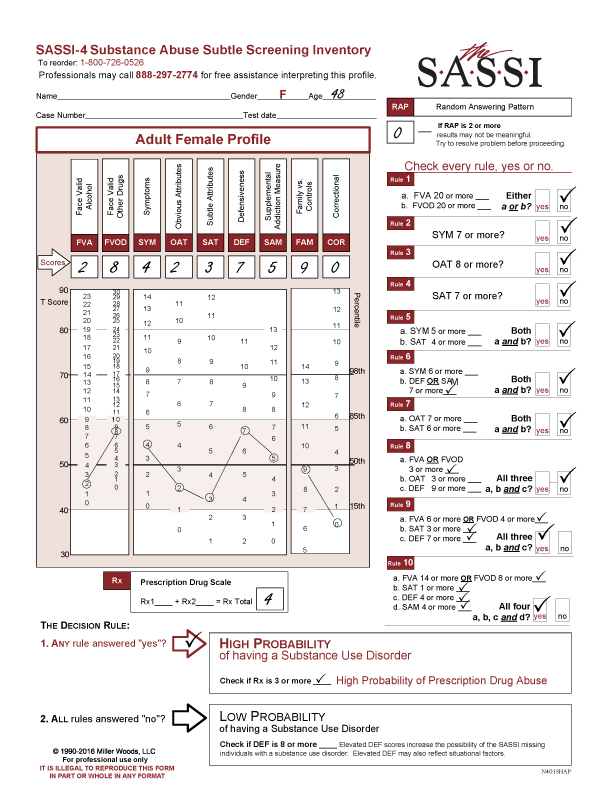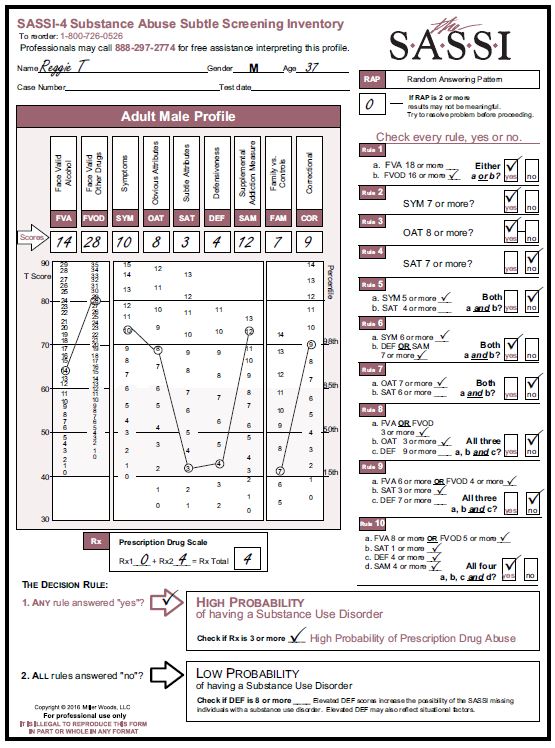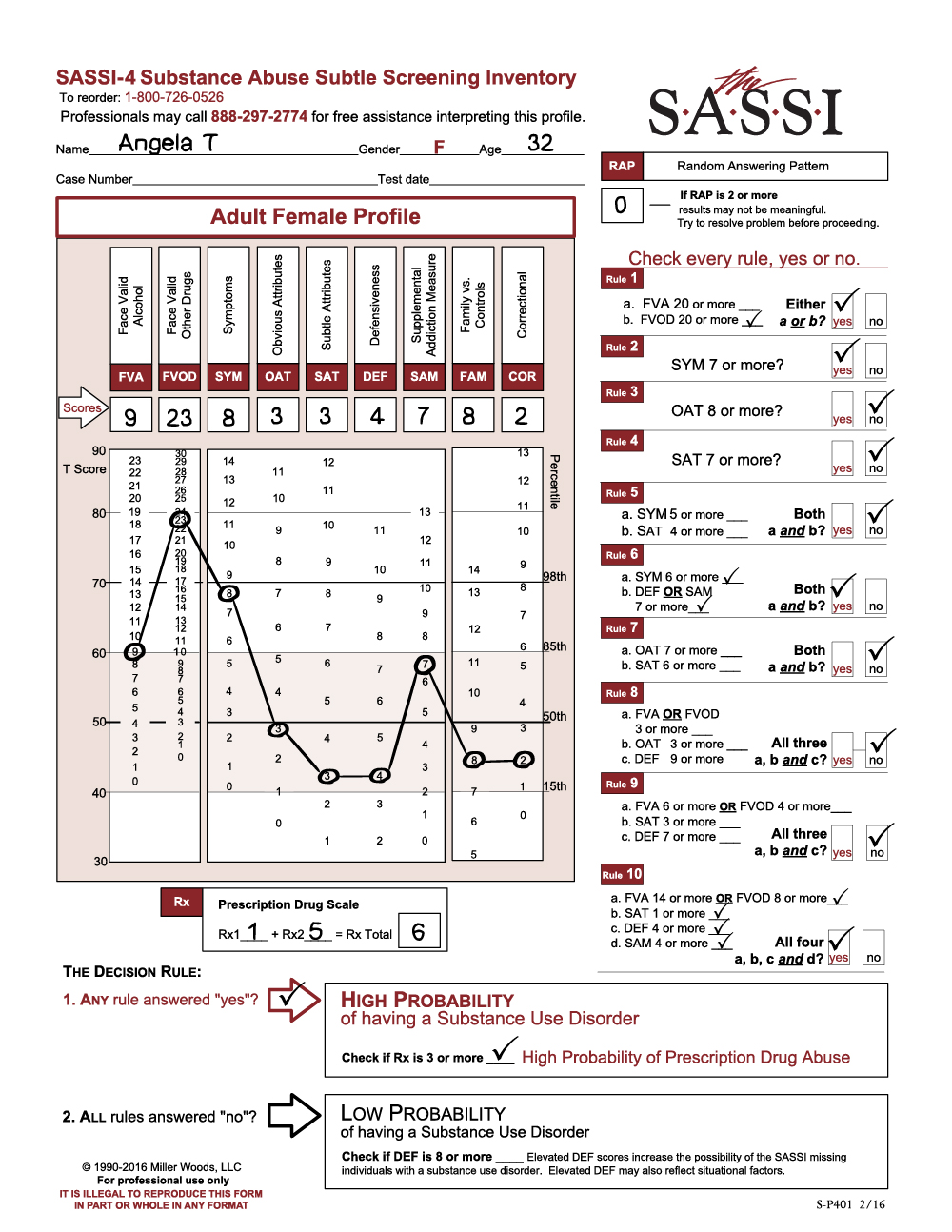Perplexed callers periodically raise the question of how to interpret the results to their clients when all the scores fall within the norm and are only one standard deviation above or below the T-score of 50. Clinical interpretation is minimal although you can glean some useful information than just reporting a high probability.
The following profile result is of a 48-year-old female. She completed the FVA/FVOD side of the questionnaire for the last 12 months. Her RAP score was 0. Her Prescription Drug Scale score was 4 which indicates a High Probability of Prescription Drug Abuse.

As you can see, her FVA of 2 indicates below average use of alcohol, her FVOD score of 8 indicates above average use of drugs though within the norm. Her SYM score of 4 is also within the norm and although above average, she is not endorsing a lot of negative symptoms or consequences of her usage. Content analysis is useful with the Face Valid scales because they will give the context or conditions of how the client is using substances. The OAT score of 4 is within the norm so one hypothesis to explore, given the High Probability of a Substance Use disorder result, is if this client identifies with other addicted folks and those issues we often see in that population i.e. self-pity, resentment, low frustration tolerance, impatience etc. I would suspect not.
The SAT score of 3 is well below average although within the norm, this client may be concerned with what you think about her. The DEF scale score of 7 is above average but also within the norm so you may be picking up a bit of a defensive posture with this client.
The last 3 scales, SAM, FAM and COR have no clinical impact.
Moving onto the Rules, two rules are met: Rule 9 and Rule 10.
Rule 9
- FVA 6 or more or FVOD is 4 or more
- SAT is 3 or more
- DEF is 7 or more
- All three, a,b, c ? YES
Rule 10
- FVA is 14 or more or FVOD is 8 or more
- SAT is 1 or more
- DEF is 4 or more
- SAM is 4 or more
- All four, a,b,c, d ? YES
The Rules are research based. Single scores within one standard deviation above or below the normative scores for each scale are not likely to indicate strong evidence of a diagnosable substance use disorder or a clinical problem. However, validation research indicated that some combinations of scores within this normative range such as in Rules 9 and 10 were evidenced by people who were diagnosed with a substance use disorder, and yet this same pattern of scores was not evidenced by those without substance use disorders. The scoring rules identify patterns of scores that accurately and reliably identify individuals with substance use disorders- even when the individual scores in the rule are not indicative of SUD on their own. Also, Table 10 in Chapter 7 in the SASSI-4 User Guide & Manual shows that both Rules 9 and 10 have a 96% accuracy rate indicating that the rules rarely identify people who do NOT have an SUD as positive on these rules.
You can see for Rules 1-4, the cutoff scores are outside the standard deviation which allows for both meeting the rule criteria and allows for easier clinical interpretation as well.
It is also important to note that the cutoff scores for each scale in any rule are specific to the rule. Being close doesn’t count.
Giving feedback to this client, the administrator needs to be aware of the bit of defensiveness and sensitivity of the client and perhaps the reluctance to identify as an addict. Using the information, she did endorse in the FVA, FVOD and SYM scales along with the Prescription Drug Scale results. It may help her to connect the dots and thus become open to whatever treatment considerations are discussed.
As always, if you have any questions about your SASSI results, please contact us through the free Clinical Helpline. We are available M-F, 12 – 5 EST at 888-297-2774 or 800-726-0526.


